I need help in plotting the Bit error curve or the symbol error curve for BPSK modulation scheme for varying Signal to Noise ratios or Eb/N0. The plot should show the simulated versus the theoretical curve, but I cannot figure out how to mitigate the problems when using the Constant Modulus Algorithm as an Equalizer which are:
(1)
Error using *
Inner matrix dimensions must agree.
Error in BER_BPSK_CMA (line 50)
yy = w'*x;
(2) I want to use the filter function instead of conv in order to model a moving average channel model, chanOut = filter(ht,1,s). But, when I use filter, I am getting an error. How can I use filter function here?
(3) Bit error rate calculation
UPDATED Code with the Problem 1 solved. However, I am still unable to use filter and unsure if BER curve is proper or not.
Below is the code I wrote:
% Script for computing the BER for BPSK modulation in 3 tap ISI
% channel
clear
N = 10^2; % number of bits or symbols
Eb_N0_dB = [0:15]; % multiple Eb/N0 values
K = 3; %number of users
nTap = 3;
mu = 0.001;
ht = [0.2 0.9 0.3];
L = length(ht);
for ii = 1:length(Eb_N0_dB)
% Transmitter
ip = rand(1,N)>0.5; % generating 0,1 with equal probability
s = 2*ip-1; % BPSK modulation 0 -> -1; 1 -> 0
% Channel model, multipath channel
chanOut = conv(s,ht);
% chanOut = filter(ht,1,s); %MA
n = 1/sqrt(2)*[randn(1,N+length(ht)-1) + j*randn(1,N+length(ht)-1)]; % white gaussian noise, 0dB variance
% Noise addition
y = chanOut + 10^(-Eb_N0_dB(ii)/20)*n; % additive white gaussian noise
%CMA
Le =20; %Equalizer length
e = zeros(N,1); % error
w = zeros(Le,1); % equalizer coefficients
w(Le)=1; % actual filter taps are flipud(w)!
yd = zeros(N,1);
r = y';
% while(1)
for i = 1:N-Le,
x = r(i:Le+i-1);
%x = r(i:(Le+i-1));
yy = w'*x;
yd(i)= yy;
e(i) = yy^2 - 1;
mse_signal(ii,i) = mean(e.*e);
w = w - mu * e(i) * yy * x;
end
sb=w'*x; % estimate symbols (perform equalization)
% receiver - hard decision decoding
ipHat = real(sb)>0;
% counting the errors
nErr_CMA(ii) = size(find([ip- ipHat]),2);
% calculate SER
end
simBer_CMA = nErr_CMA/N;
theoryBer = 0.5*erfc(sqrt(10.^(Eb_N0_dB/10))); % theoretical ber
for i=1:length(Eb_N0_dB),
tmp=10.^(i/10);
tmp=sqrt(tmp);
theoryBer(i)=0.5*erfc(tmp);
end
figure
semilogy(theoryBer,'b'),grid;
hold on;
semilogy(Eb_N0_dB,simBer_CMA,'r-','Linewidth',2);
%axis([0 14 10^-5 0.5])
grid on
legend('sim-CMA');
xlabel('Eb/No, dB');
ylabel('Bit Error Rate');
title('Bit error probability curve for BPSK in ISI with CMA equalizer');
